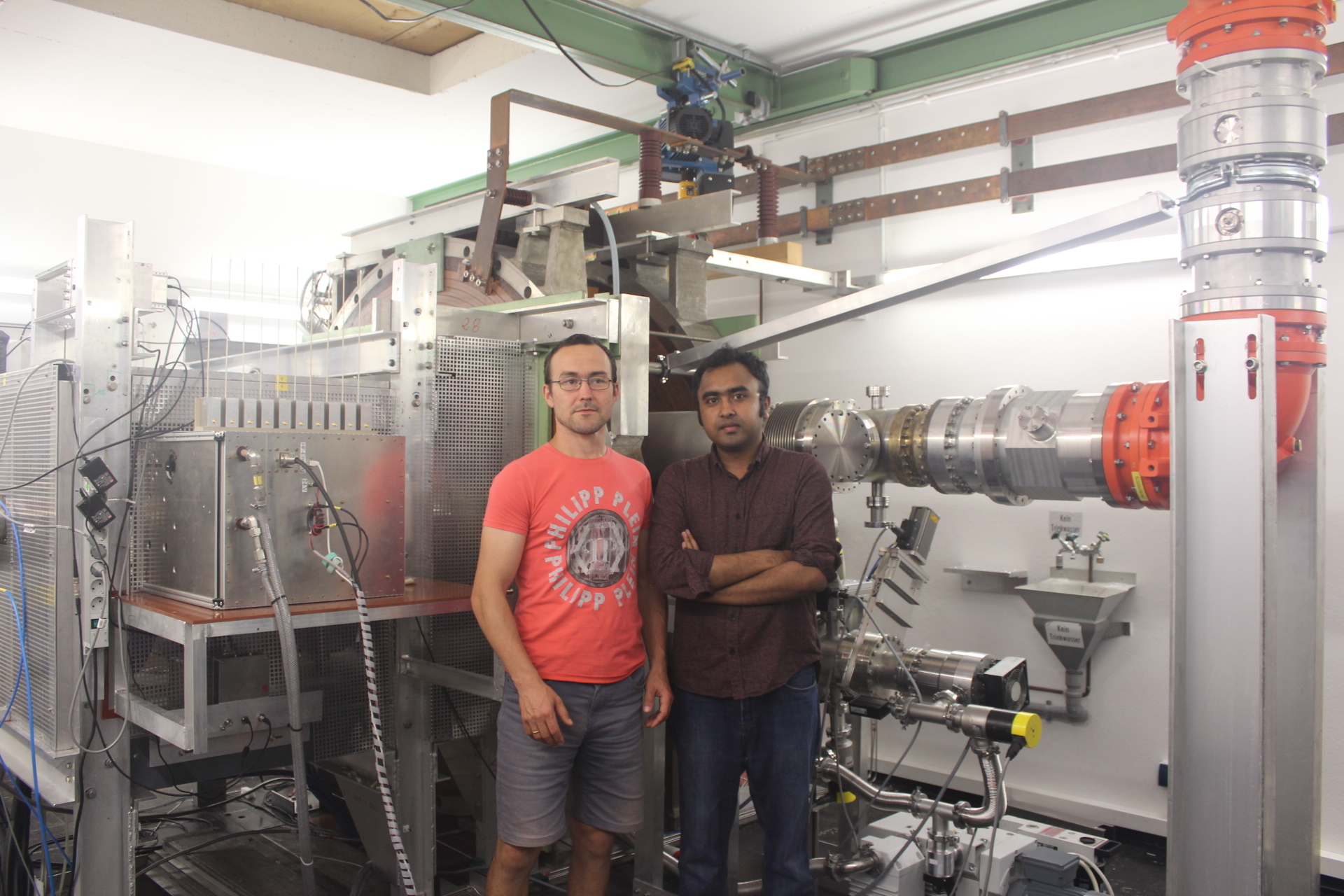First of all I like to thank Fusenet and Eurofusion for providing me financial support during my master’s thesis at Max Planck Institute for Plasma Physics, Garching, Germany. I did my thesis on helicon plasma source of IShTAR test facility.
IShTAR (Ion Sheath Test Arrangement) is a dedicated experimental facility developed to address some basic problem of ICRF heating system. In the fusion experiment the ICRF antenna placed close to the plasma and sheaths forming in front of antenna and limiters. This sheaths enhanced due to the interaction of uncoupled RF wave launched by the antenna with the plasma. This sheath considered to be the main reason for many spurious effects like, sputtering, hot spot formation, impurities release to the plasma and power loss. To understand these problem in the fundamental level and to optimize the ICRF antenna for the next generation burning fusion plasma devices, a dedicated experiment like IShTAR is necessary. This device has two chamber: one is main vacuum vessel, where ICRF antenna accommodate and the other one is plasma source, which is responsible for creating plasma edge environment (in terms electron temperature and density) in front of ICRF antenna.
My aim was to characterize and optimize the plasma source of this device. I did experimental investigation with a RF compensated single Langmuir probe. IShTAR source is a helicon type plasma source with a helical antenna, designed to reach helicon mode of discharge. Helicon plasma source known for its ability to produce very high density plasma and efficient plasma production can only be achieved if it reaches helicon mode of discharge. For IShTAR plasma source it wasn’t proven before that it can reach helicon mode of discharge. I did two sets experiment for different gas pressure and input power.
After characterizing the plasma parameter space I implemented a global model of particle and power balance to validate the experimental result. Global model also gives a cause and effect relationship between plasma parameters and operational conditions. It was found that electron density and temperature were in agreement with the model but plasma potential showed discrepancies for high gas pressures. From the power balance it was found that higher power absorption at lower magnetic field. This suggested existence of high power coupling mode at low magnetic field and it was verified from the mode transition plot that helicon mode is exists at lower magnetic field. Later I theoretically calculated optimize operating condition for which IShTAR can achieve high- density helicon mode at high magnetic field. This will help IShTAR to test the ICRF antenna in a plasma edge environment for the next generation fusion devices.
During my stay at IPP I really enjoyed my life. I learned a lot about how people work in a renowned research center like IPP. Almost every day there were seminars, lectures so one can get informed what other researchers are doing. There are plenty of student working on ranging from internship to PhD theses so one can find interesting company to spent the time. The only thing I didn’t like about Munich is its very expensive city but thanks to Fusenet for the funding which made my life easier.

